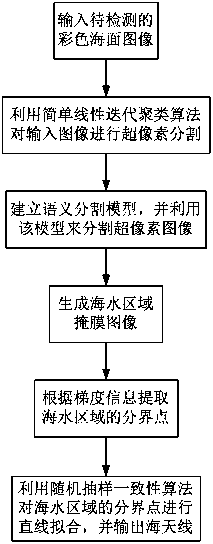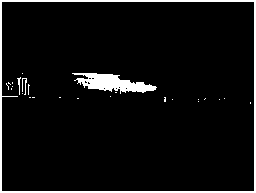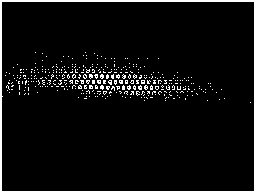Image semantic segmentation-based sea-sky-line detection method
A sea-line detection and semantic segmentation technology, applied in the field of image processing, can solve the problems of sea-line detection results error, sea-line cannot be effectively extracted from coastlines, and difficult to meet practical application requirements, etc., and achieves high accuracy and robustness. The effect of small distractions
- Summary
- Abstract
- Description
- Claims
- Application Information
AI Technical Summary
Problems solved by technology
Method used
Image
Examples
Embodiment 1
[0073] A sea antenna detection method based on image semantic segmentation disclosed in the present invention will be described below with an example. The present embodiment adopts C++ programming language and OpenCV storehouse to realize, and concrete implementation steps are as follows:
[0074] (1) Input the color sea surface image to be detected;
[0075] The sea surface image to be detected is a 24-bit RGB digital image with a resolution of 640x480, such as Figure 2a shown.
[0076] (2) Using Simple Linear Iterative Clustering Algorithm (SLIC) to perform superpixel segmentation on the input image;
[0077] Use the SLIC algorithm to perform superpixel segmentation on the input image, such as Figure 2b shown. Among them, the number of expected superpixels is set to 1500, and the number of superpixels finally generated may be slightly less than 1500 according to the actual pixel distribution of the image.
[0078] (3) Using superpixels as the basic unit, establish a p...
Embodiment 2
[0113] Fig. 3 is a preferred embodiment of the detection method of the present invention coastline. Its specific implementation steps are the same as those in Embodiment 1, so they are not repeated here. From the detection results of Embodiment 1 and Embodiment 2, it can be seen that the present invention can still detect the sea antenna or coastline in the sea surface image more accurately when there are clouds in the low altitude and islands and land in the distance.
PUM
 Login to View More
Login to View More Abstract
Description
Claims
Application Information
 Login to View More
Login to View More - R&D
- Intellectual Property
- Life Sciences
- Materials
- Tech Scout
- Unparalleled Data Quality
- Higher Quality Content
- 60% Fewer Hallucinations
Browse by: Latest US Patents, China's latest patents, Technical Efficacy Thesaurus, Application Domain, Technology Topic, Popular Technical Reports.
© 2025 PatSnap. All rights reserved.Legal|Privacy policy|Modern Slavery Act Transparency Statement|Sitemap|About US| Contact US: help@patsnap.com



